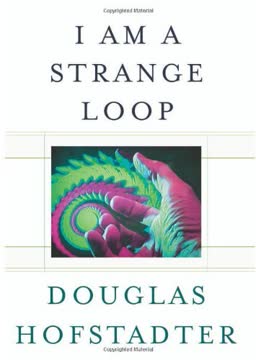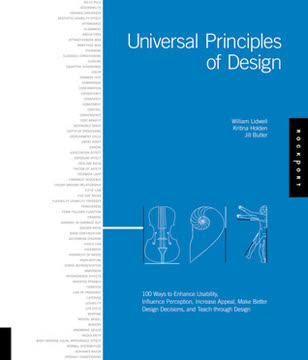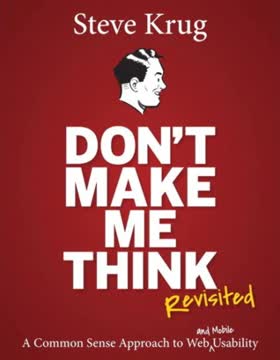重点摘要
1. 简单通过深思熟虑的减少来实现
实现简单的最简单方法是通过深思熟虑的减少。
SHE原则。 简化过程可以通过SHE原则来实现:缩小、隐藏、体现。缩小一个物体或概念使其更易接近且不那么令人生畏。将复杂性隐藏在简单的界面后面可以减少认知负担。在简化版本中体现质量可以保持其价值和吸引力。
深思熟虑的减少示例:
- 移除设备上不必要的按钮
- 精简产品功能以专注于核心功能
- 将复杂的过程简化为更少、更易管理的步骤
关键在于减少而不牺牲基本功能或价值。这需要对被简化的对象或概念及其预期目的有深刻的理解。
2. 组织从混乱中创造秩序
组织使多变少。
SLIP方法。 SLIP方法(分类、标记、整合、优先)是组织信息和从复杂性中创造简单的有效方法。这个过程有助于识别系统中的自然分组和层次结构,使其更易于管理和理解。
组织的好处:
- 通过分组相似项目减少认知负担
- 提高查找和使用信息的效率
- 创造秩序感和控制感
有效的组织不仅仅是整洁;它涉及创建有意义的结构以增强理解和可用性。目标是通过深思熟虑的安排和分类使复杂系统看起来更简单和更易管理。
3. 节省时间等于简单
节省时间感觉像是简单。
效率的感知。 当过程或产品节省时间时,它们被认为更简单且更有价值。这种感知根植于我们最大化有限时间和资源的内在愿望。
节省时间的策略:
- 自动化重复任务
- 精简工作流程
- 提供清晰、简明的信息
挑战在于平衡时间节省与效果。仅仅使某事更快并不一定使其更好或更简单。目标是创造既节省时间又保持或提高结果质量的解决方案。
4. 知识简化一切
知识使一切变得简单。
理解的力量。 当我们真正理解某事时,它对我们来说变得更简单。这一原则适用于使用和创建产品或系统。我们拥有的知识越多,越容易驾驭复杂性。
知识获取策略:
- 将复杂概念分解为易消化的部分
- 提供清晰的上下文信息
- 鼓励动手学习和实验
设计师和创造者应努力使他们的产品直观,但也要为用户提供获得更深理解的途径。这种即时可用性与长期掌握之间的平衡是创造真正简单而强大的解决方案的关键。
5. 简单和复杂是相互依存的
简单和复杂需要彼此。
平衡与对比。 简单和复杂之间的关系不是对立的,而是共生的。简单的元素可以使复杂系统更易管理,而复杂性可以为简单设计增添深度和丰富性。
平衡简单和复杂:
- 使用简单界面控制复杂系统
- 添加详细元素以增强简单设计
- 在用户体验中创造简单和复杂的节奏
目标不是完全消除复杂性,而是找到增强可用性和参与度的正确平衡。这个平衡会根据上下文和用户的需求和偏好而有所不同。
6. 上下文在简单中至关重要
简单的外围绝对不是外围的。
整体方法。 简单不是孤立存在的;它深受其上下文的影响。理解和考虑产品或系统存在的更广泛环境对于实现有意义的简单至关重要。
上下文考虑:
- 用户的背景和期望
- 使用的物理和数字环境
- 文化和社会因素
通过采取整体视角,设计师可以创造不仅在孤立中简单,而且在其预期使用上下文中真正简单和有效的解决方案。
7. 在设计中拥抱情感
更多的情感比更少的情感更好。
情感共鸣。 虽然简单通常侧重于减少复杂性,但不应以牺牲情感联系为代价。唤起积极情感的设计即使在客观上更复杂,也会感觉更简单和更令人满意。
在设计中融入情感:
- 使用美学创造积极的情感反应
- 设计令人愉悦和惊喜的时刻
- 允许个性化和自我表达
挑战在于平衡情感丰富性与功能简单性。目标是创造不仅易于使用,而且在情感上令人满意和吸引人的设计。
8. 信任是简单的基础
在简单中我们信任。
建立信心。 信任使用户能够更自由和自信地与系统互动,使复杂的互动感觉更简单。当用户信任产品或系统时,他们更愿意探索并且对潜在错误不那么焦虑。
建立信任的策略:
- 提供清晰、诚实的沟通
- 确保性能的可靠性和一致性
- 提供简单的方法来纠正错误或撤销操作
信任是通过一致的积极体验逐渐建立的。设计师应专注于创造不仅易于使用,而且可靠、透明并能宽容用户错误的产品。
9. 有些事情永远无法简化
有些事情永远无法变得简单。
接受复杂性。 重要的是要认识到并非所有事情都可以或应该简化。有些系统本质上是复杂的,试图过度简化它们可能会导致重要功能或理解的丧失。
管理必要复杂性的策略:
- 提供清晰的解释和上下文
- 将复杂系统分解为更易管理的部分
- 为不同用户提供不同层次的参与
目标不总是简化,而是使复杂性更易管理和理解。这可能涉及为复杂系统创建更简单的界面或提供更好的工具来导航和理解复杂性。
10. 简单是减去显而易见的,增加有意义的
简单是减去显而易见的,增加有意义的。
简单的本质。 真正的简单不仅仅是减少;它涉及识别和强调真正重要的东西,同时移除或弱化其余部分。这个过程需要对设计的目的和上下文有深刻的理解。
实现有意义的简单:
- 识别核心功能和价值
- 移除或隐藏非必要元素
- 增强和强调有意义的特征
挑战在于在减少和增强之间找到正确的平衡。目标是创造不仅更简单,而且在实现其预期目的方面更有意义和更有效的设计。
最后更新日期:
FAQ
What's "The Laws of Simplicity" about?
- Author and Focus: Written by John Maeda, the book explores the concept of simplicity in design, technology, business, and life.
- Core Message: It presents ten laws and three keys to achieving simplicity, emphasizing the balance between simplicity and complexity.
- Personal Mission: Maeda shares his journey and mission to achieve simplicity in the digital age, drawing from his experiences at MIT.
- Practical Application: The book provides practical advice and insights for individuals and businesses seeking to simplify their processes and products.
Why should I read "The Laws of Simplicity"?
- Understanding Simplicity: It offers a comprehensive framework for understanding and applying simplicity in various aspects of life and work.
- Practical Insights: The book provides actionable insights and strategies that can be applied to design, technology, and business.
- Personal Growth: Readers can gain a deeper understanding of how to balance simplicity and complexity in their personal and professional lives.
- Inspiration: Maeda's personal anecdotes and experiences offer inspiration and motivation for those seeking to simplify their lives.
What are the key takeaways of "The Laws of Simplicity"?
- Ten Laws: The book outlines ten laws that guide the pursuit of simplicity, such as "Reduce," "Organize," and "Learn."
- Three Keys: It introduces three keys—Away, Open, and Power—that are crucial for achieving simplicity in technology.
- Balance of Simplicity and Complexity: Simplicity and complexity are interdependent, and finding the right balance is essential.
- Practical Application: The laws and keys can be applied independently or together to simplify design, technology, business, and life.
What are the best quotes from "The Laws of Simplicity" and what do they mean?
- "Simplicity is about subtracting the obvious, and adding the meaningful." This quote encapsulates the essence of simplicity, emphasizing the importance of removing unnecessary elements while enhancing what truly matters.
- "In simplicity we trust." This highlights the role of trust in achieving simplicity, whether in design, technology, or personal interactions.
- "More emotions are better than less." This suggests that emotional engagement can enhance the experience of simplicity, making it more meaningful and impactful.
- "What lies in the periphery of simplicity is definitely not peripheral." This underscores the importance of context and the surrounding environment in understanding and achieving simplicity.
What is the "Reduce" law in "The Laws of Simplicity"?
- Core Principle: The simplest way to achieve simplicity is through thoughtful reduction, focusing on removing unnecessary elements.
- Practical Example: Maeda uses the example of a DVD player, suggesting that reducing buttons to only the essential ones can simplify its use.
- Balance: The challenge lies in finding the balance between simplicity and functionality, ensuring that essential features remain.
- SHE Method: The law introduces the SHE method—Shrink, Hide, Embody—as strategies to achieve reduction.
How does "The Laws of Simplicity" define the "Organize" law?
- Purpose of Organization: Organization makes a system of many appear fewer, helping to manage complexity effectively.
- Practical Strategies: The book suggests using methods like sorting, labeling, integrating, and prioritizing (SLIP) to organize effectively.
- Visual Design: Maeda emphasizes the importance of visual organization, using tools like the tab key to create order from chaos.
- Gestalt Principles: The law draws on Gestalt psychology, highlighting the mind's ability to perceive patterns and groupings.
What is the "Time" law in "The Laws of Simplicity"?
- Time and Simplicity: Savings in time feel like simplicity, as reducing wait times can enhance the perception of simplicity.
- Practical Application: The book discusses strategies like shrinking time, hiding time, and embodying time to manage it effectively.
- Progress Bars: Maeda highlights the use of progress bars as a way to manage the perception of time during waiting periods.
- Balancing Time: The law encourages finding ways to make waiting more tolerable or to reduce wait times altogether.
How does "The Laws of Simplicity" address the "Learn" law?
- Knowledge and Simplicity: Knowledge makes everything simpler, as understanding a system can reduce its perceived complexity.
- Teaching and Learning: Maeda shares insights from his experience as a professor, emphasizing the importance of teaching the basics.
- Motivation: The law discusses the role of motivation in learning, whether intrinsic or extrinsic, to facilitate understanding.
- Relate-Translate-Surprise: The book introduces this method as a way to make complex systems more relatable and understandable.
What is the "Differences" law in "The Laws of Simplicity"?
- Interdependence: Simplicity and complexity need each other, as contrast helps to highlight and appreciate simplicity.
- Rhythm and Balance: The law emphasizes the importance of rhythm in balancing simplicity and complexity over time and space.
- Practical Examples: Maeda uses examples like business cards and the Japanese tea ceremony to illustrate the interplay of simplicity and complexity.
- Cultural Context: The law acknowledges that cultural differences can influence perceptions of simplicity and complexity.
How does "The Laws of Simplicity" explain the "Context" law?
- Peripheral Importance: What lies in the periphery of simplicity is definitely not peripheral, as context plays a crucial role in understanding.
- White Space: Maeda discusses the importance of white space in design, allowing the foreground to stand out.
- Ambience: The law highlights the role of ambience and the surrounding environment in shaping experiences.
- Comfortably Lost: It encourages finding a balance between being directed and directionless, allowing for exploration and discovery.
What is the "Emotion" law in "The Laws of Simplicity"?
- Emotional Engagement: More emotions are better than less, as emotional engagement can enhance the experience of simplicity.
- Feel and Feel For: The law encourages designers to connect with their own emotions and empathize with users.
- Nude Electronics: Maeda discusses the trend of accessorizing simple devices to add warmth and personality.
- Aichaku: The book introduces the Japanese concept of aichaku, or emotional attachment to objects, as a form of hidden ornamentation.
How does "The Laws of Simplicity" address the "Trust" law?
- Trust in Simplicity: In simplicity we trust, as trust is essential for achieving simplicity in design and technology.
- Lean Back: Maeda uses the example of Bang & Olufsen to illustrate the importance of trust in creating a relaxing experience.
- Omakase: The law draws parallels with the Japanese omakase dining experience, where trust in the chef leads to a satisfying meal.
- Undo: It discusses the role of the undo function in digital media, allowing users to trust their actions without fear of mistakes.
评论
《简约法则》评价褒贬不一,平均评分为3.90分(满分5分)。读者们欣赏前田简明地提出了设计简约系统的10条法则和3个关键原则。许多人认为这些概念富有洞见,适用于各个领域,并赞扬该书的简洁和深思熟虑的方式。然而,有些人批评它缺乏深度,过于专注于产品设计,或包含显而易见的信息。几位评论者指出,尽管这些想法很有趣,但例子和解释可以更有效。
Similar Books















